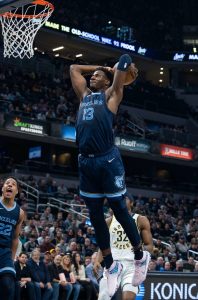From 1998 to 2019, the Spurs made the playoffs for 22 consecutive seasons, including 19 campaigns with 50-plus wins (in 1998/99, they went 37-13 due to a lockout – a 61-win pace – and went on to win the championship). From 2020-22, the Spurs went 32-39, 33-39 and 34-48, missing the postseason each time.
Trading Derrick White to Boston at the 2022 trade deadline was the first signal that San Antonio was entertaining a full-on rebuild. Dealing Dejounte Murray to Atlanta last summer further cemented that plan, and the Spurs wound up trading two more veterans on expiring deals – Jakob Poeltl and Josh Richardson – at February’s deadline.
The Spurs finished this season 22-60, tied for the second-worst record in the league with Houston. The last time they finished with a record that poor was in ’96/97, when they won the draft lottery and selected Tim Duncan first overall, which led to five championships and the aforementioned playoff streak.
If the plan was to do a short-term tank while (hopefully) developing young players, ’22/23 was the season to do it. San Antonio will be hoping to cash in on its 14% odds and land another potential generational talent in French phenom Victor Wembanyama.
The Spurs’ Offseason Plan:
 Considering they finished 29th in offense and 30th in defense with the worst net rating in the league (a brutal minus-9.9), it’s safe to say the Spurs need help wherever they can find it. A star to build around would be a great place to start, but they’ll almost certainly have to hope that will come via the draft or through internal development.
Considering they finished 29th in offense and 30th in defense with the worst net rating in the league (a brutal minus-9.9), it’s safe to say the Spurs need help wherever they can find it. A star to build around would be a great place to start, but they’ll almost certainly have to hope that will come via the draft or through internal development.
San Antonio has long been known as one of the most inscrutable organizations in the NBA. Predicting what the team will do in the offseason is a fool’s errand, but I’ll give it my best shot.
There are likely several young players the Spurs will have little to no interest in trading. Jeremy Sochan, Keldon Johnson and Devin Vassell are in that group, with Sochan probably the closest to untouchable on the roster.
The Spurs have a history of coming to agreements on rookie scale extensions, and I think the odds are pretty high that Vassell will get a new deal after averaging 18.5 PPG, 3.9 RPG, 3.6 APG and 1.1 SPG on .439/.387/.780 shooting in his third season (he was limited to 38 games due to left knee surgery).
Youngsters Malaki Branham, Blake Wesley and Charles Bassey all need time to develop. I expect them all to be on the roster to start next season.
It wouldn’t be surprising if the Spurs gauge the trade values of Doug McDermott and Devonte’ Graham, but I don’t expect there to be a ton of interest – they’re fine role players, but their contracts probably have neutral value at best. Khem Birch’s NBA future is up in the air due to lingering knee problems, but his contract is also expiring, so they’ll likely just live with his $7MM-ish cap hit in ‘23/24 and hope he gets healthy enough to resume his career (waiving him outright to clear a roster spot is another viable option).
Zach Collins’ $7.7MM salary is a lock to be guaranteed, as longtime head coach Gregg Popovich has already said he would be the starting center entering next season. Injuries have plagued Collins throughout his six-year career, but he’s still only 25 years old and played well in ’22/23.
I expect Tre Jones, a restricted free agent, to be back next season, though I don’t have a great feel for what type of contract he might receive – he has plenty of desirable traits, but he’s a small point guard who doesn’t shoot threes well, making his market value tricky to gauge. I’m less optimistic about Romeo Langford returning unless he takes a discount – his qualifying offer isn’t team-friendly, so he’ll probably become an unrestricted free agent.
As for the other impending free agents, I wouldn’t be surprised if both two-way players (Dominick Barlow, Julian Champagnie) are retained one way or another, but it could go either way with the remaining three (Sandro Mamukelashvili, Keita Bates-Diop, Gorgui Dieng).
Assuming they guarantee Collins’ salary, re-sign Jones at a starting salary of $11MM (just a rough estimate), select No. 3 overall like their placeholder cap hold, and renounce their other free agents, the Spurs will have approximately $29MM to spend on free agents, plus the $7.6MM room exception.
I don’t expect them to go after any of the marquee names in free agency given the state of their rebuild, but some second-tier guys like Max Strus or P.J. Washington might be worth watching (Washington will be restricted if given a qualifying offer, as expected). They could also add assets by taking on unwanted salaries from rival clubs, like they did during ’22/23.
Salary Cap Situation
Guaranteed Salary
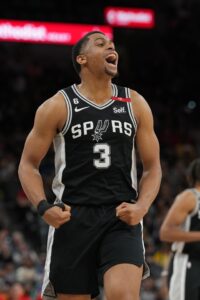 Keldon Johnson ($20,000,000)
Keldon Johnson ($20,000,000)- Doug McDermott ($13,750,000)
- Devonte’ Graham ($12,100,000)
- Khem Birch ($6,985,000)
- Devin Vassell ($5,887,889)
- Jeremy Sochan ($5,316,960)
- Malaki Branham ($3,071,880)
- Charles Bassey ($2,600,000)
- Blake Wesley ($2,504,640)
- Total: $72,216,379
Dead/Retained Salary
- Joshua Primo ($4,314,600)
- Total: $4,314,600
Player Options
- None
Team Options
- None
Non-Guaranteed Salary
- Zach Collins ($7,700,000)
- Total: $7,700,000
Restricted Free Agents
- Romeo Langford ($7,744,600 qualifying offer / $16,902,771 cap hold): Bird rights
- Tre Jones ($5,216,324 qualifying offer / $5,216,324 cap hold): Bird rights
- Sandro Mamukelashvili ($2,189,698 qualifying offer / $2,189,698 cap hold): Non-Bird rights
- Total (cap holds): $24,308,793
Two-Way Free Agents
Draft Picks
- No. 3 overall ($9,625,800)
- Note: This is only a placeholder until the draft order is determined via the lottery.
- No. 32 overall (no cap hold)
- Note: This pick could be No. 33 instead if the Spurs pick earlier than Houston in the first round.
- No. 44 overall (no cap hold)
- Total: $9,625,800
Extension-Eligible Players
- Khem Birch (veteran)
- Zach Collins (veteran)
- Devonte’ Graham (veteran)
- Doug McDermott (veteran)
- Devin Vassell (rookie scale)
Note: These are players who are either already eligible for an extension or will become eligible before the 2023/24 season begins.
Unrestricted Free Agents / Other Cap Holds
- Keita Bates-Diop ($1,989,698 cap hold): Bird rights
- Gorgui Dieng ($1,989,698 cap hold): Non-Bird rights
- Total: $3,979,396
Cap Exceptions Available
- Room exception: $7,609,000
 Injuries certainly played a role in that – 2021 No. 1 overall pick
Injuries certainly played a role in that – 2021 No. 1 overall pick 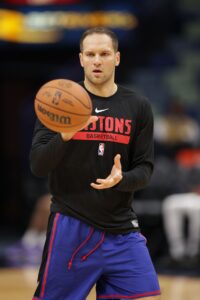
 In the playoffs, the Warriors were finally back at full strength (Curry, Thompson, and Green played 455 postseason minutes together), and while they may not have been quite as dominant as they were with
In the playoffs, the Warriors were finally back at full strength (Curry, Thompson, and Green played 455 postseason minutes together), and while they may not have been quite as dominant as they were with 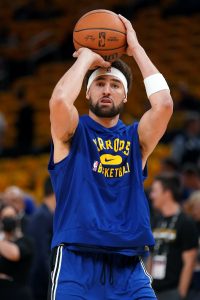
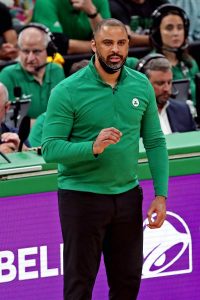 Some roster changes at the trade deadline – including essentially replacing
Some roster changes at the trade deadline – including essentially replacing 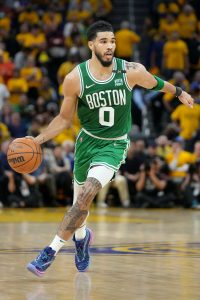
 The Heat have five players on guaranteed contracts for 2022/23. Of those players, it’s safe to assume Butler and Adebayo aren’t going anywhere. That’s less of a sure thing for Lowry, Herro, and
The Heat have five players on guaranteed contracts for 2022/23. Of those players, it’s safe to assume Butler and Adebayo aren’t going anywhere. That’s less of a sure thing for Lowry, Herro, and  Note: These are players who are either already eligible for an extension or will become eligible before the 2022/23 season begins.
Note: These are players who are either already eligible for an extension or will become eligible before the 2022/23 season begins. The Mavericks have already made what will be one of the biggest moves of their summer, agreeing to send the No. 26 pick in this year’s draft and four bench players (
The Mavericks have already made what will be one of the biggest moves of their summer, agreeing to send the No. 26 pick in this year’s draft and four bench players (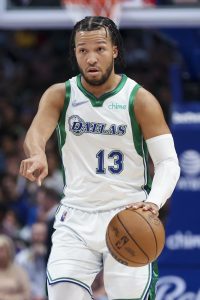
 Let’s start with Ayton, the Suns’ only core player who isn’t already under contract for the 2022/23 season. He’ll be eligible for restricted free agency this offseason after failing to agree to an extension with the team last fall. Even though Phoenix was unwilling to give Ayton a five-year, maximum-salary contract a year ago, there had long been an expectation that the two sides would have an easier time reaching an agreement this summer — if not a max deal, then something very close to it.
Let’s start with Ayton, the Suns’ only core player who isn’t already under contract for the 2022/23 season. He’ll be eligible for restricted free agency this offseason after failing to agree to an extension with the team last fall. Even though Phoenix was unwilling to give Ayton a five-year, maximum-salary contract a year ago, there had long been an expectation that the two sides would have an easier time reaching an agreement this summer — if not a max deal, then something very close to it.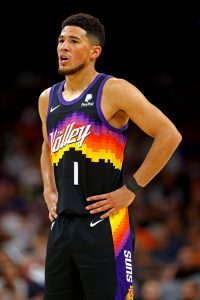
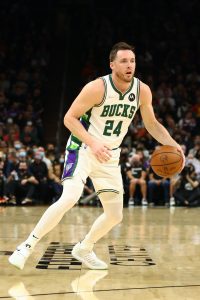 A handful of key Bucks rotation players are eligible for free agency, including three wings:
A handful of key Bucks rotation players are eligible for free agency, including three wings: 
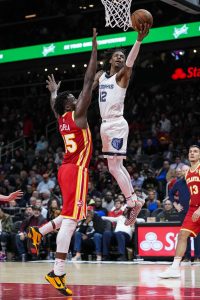 I referred above to Morant as “around for the long haul,” but he and the Grizzlies still need to make that official. That should be one of the first – and most straightforward – orders of business for the team this offseason. Morant will become eligible on July 1 for a maximum-salary rookie scale extension, and I expect Memphis to immediately put that offer on the table.
I referred above to Morant as “around for the long haul,” but he and the Grizzlies still need to make that official. That should be one of the first – and most straightforward – orders of business for the team this offseason. Morant will become eligible on July 1 for a maximum-salary rookie scale extension, and I expect Memphis to immediately put that offer on the table.